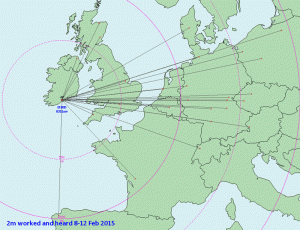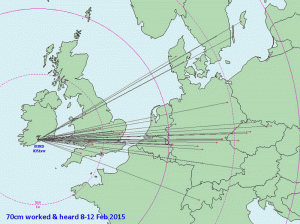Wow! I haven’t posted for quite a while, perhaps I’ve too busy actually being “on the air”, rather than spending all my time on various forums moaning about FT8 or some other nonsense? Anyway, I’d better generate a few updates and here’s the first.
First of all, of course, is the fact that I’ve finally made a 2-way qso with D4 on 2m. D4Z, in fact, operated by Mark, EA8FF, on-site in Cape Verde, HK76MU. This was on 5th August 2018 at 16:15z, using CW at 4163km. I was extremely happy to make this contact: it’s been a personal ambition of mine since I first became interested in VHF way back in the 1970’s – an awful long time to wait! At one time I even had genuine thoughts of living on Cape Verde to explore the V/UHF possibilities, although that never came to fruition…
Video or audio at both ends are here:
As for the qso, it was only a matter of time, having heard the beacon so many times in the past. For that very same reason, I personally didn’t make much of a “song and dance” about the fact it was, at that time, a distance record; I had no doubt it would easily be exceeded, sooner or later. Despite that, our qso did receive a lot of publicity, which was a great help in encouraging others to be aware of the possibilities. Since that day the distance record has already been extended several times by D4Z and D41CV, and it will be again, thanks to the great efforts of the team at D4C. I continue to be excited at just how far we, as a V/UHF community, can push the limits and will strive to make sure we do just that!
My own target now is to work towards a D4 qso on 70cm. Rumours are that would be a world record, not that I care 😉






